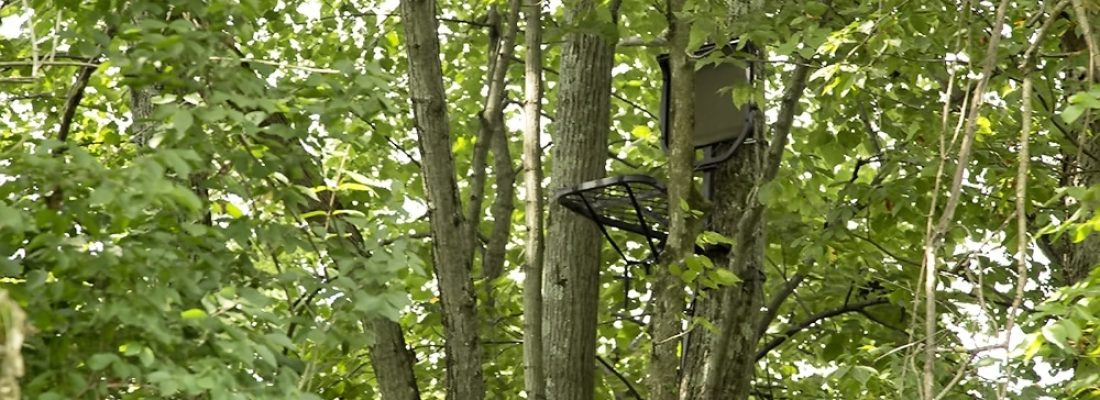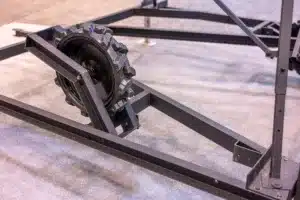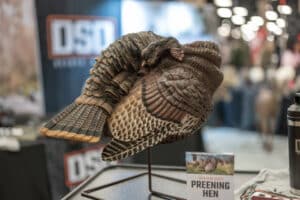No products in the cart.

365 Archery 3D Archery Targets
When folks enter a new industry, or even a new subsection of their industry, they usually dip their toe in by offering one or two


As fall quickly approaches, most, if not all of us are dreaming of killing that big buck we’ve been chasing. Some of us will be successful, most will not. In fact, statistics show, we are more likely to experience a fall from a treestand in our lifetime than we are to kill a Boone & Crockett caliber deer. Yet treestand safety remains an afterthought for so many hunters. I won’t try to tell you that I haven’t cut a few corners here and there when it comes to safety preparation in my days, but coming home safe to my family is priority number one when I hit the field, even more so than killing a big buck.
Before I go any further, let me make one thing clear; The most important piece of hunting gear you should have is a full body harness! There are several great harnesses you can use, I personally use the Muddy Safeguard, and have used this model for several years. I have had one fall from a stand and not only am I still alive, I experienced zero injuries. That has been one fall over the course of almost 20 years, but that one experience alone made all the of the money I’ve spent on safety harnesses worth while. Simply wearing your harness is not going to keep you safe. In fact, I’ve known more than one person who fell from their treestand who had their harness on. The process you take from the minute you step off the ground until you return makes all the difference in your overall safety. In this article, I’m going to lay out the basic steps I use hanging a stand, as well as what I do on a normal day of hunting.
Everything I do with a treestand, whether I’m hunting or hanging, now involves a LifeLine system. This is basically a long rope that is attached to your tree above your treestand and hangs all the way to the base of the tree. A LifeLine is used often with lock-on tree stands, but can also be used with a climbing stand if you plan on hunting the same tree multiple times. Best of all, a LifeLine can double as a lineman’s belt saving the need for carrying more gear with you than necessary. For anyone who has ever used a lineman’s belt, you know they can be a little bit of a pain. However, they not only keep you from falling during the treestand hanging process, they also allow you to focus more on hanging your stand instead of preventing a fall. The end result is a more securely hung treestand. If you are hanging a ladder stand or individual steps for a hang-on stand, the lineman’s belt is my preferred safety mechanism. If you are using a climbing stand, I find that simply sliding your standard safety rope up the tree as you climb is the simplest processes. Whatever option you choose, practice and make sure you are comfortable so that you can be safe and silent in the woods.
As I mentioned previously, in place of a dedicated lineman’s belt you can use a LifeLine to assist in hanging. When you do, you will need a second prussic knot and carabiner in order to fix the LifeLine in place. To do this, tie a basic knot around one of the hip loops on your harness (use the bottom of the LifeLine without the loop), and then wrap the rest of the LifeLine around the tree and use the prussic/carabiner combination to clip onto the opposite hip loop on your harness. After you get your stand hung, pull the remainder of the LifeLine up to you and wrap the other end of the rope around the tree. Reach through the loop at the end and grab the rope pulling it through. Next, you will attach the second prussic/carabiner to the rope below the loop and attach your primary safety harness strap. At this time, you are secured to the tree and you can unclip the section of the rope you were using for the lineman’s belt and pull the rest of the rope through allowing it to hang down the tree. Now, you have killed two birds with one stone. You have safely hung your treestand, and you have also secured your LifeLine.
With your LifeLine in place, you now have a quick and safe system to climb up and down your tree when you are ready to hunt this fall. To use a LifeLine, you attach your safety harness to the LifeLine while standing on the ground. As you climb, slide the prussic knot up the rope as you go. If the process I laid out for hanging your stand and LifeLine at the same time seems to complicated for you, then simply use a regular lineman’s belt and attach the LifeLine at the end. The most important piece of information I can share with you is, NEVER TAKE A STEP OFF THE GROUND WITHOUT FIRST SECURING YOURSELF TO THE TREE! When at all possible, take helpers with your to hang stands. Even if you hunt private property with permission only for yourself, often times a landowner understands the concern for safety and will allow you to bring assistance with you for this one task. In my case, my helpers are my main reason for wearing a safety harness in the first place.
The last bit of advice I have is to make sure you position your LifeLine in a way that in the event of a fall, you can safely get back into your stand or safely climb back down to the ground. The easiest thing to do is make sure the top of your LifeLine or safety harness strap is high enough that if you lose your balance in your stand, you are unable to fall below your stand. I like to keep my harness attached as high as possible in the tree so I can still sit, comfortably turn 360 degrees, and step far enough away from my tree that I can turn and shoot at any angle. Finally, at the base of the tree I like to tie the end of the LifeLine close to the ladder so that no matter where I am when I fall, I will end up close to my ladder. This allows me to easily get myself back into a safe position. This might seem trivial, but it is equally as dangerous to hang for too long in your safety harness as it is to fall and hit the ground. Suspension Trauma is a real thing and kills just as assuredly as a broken neck.

When folks enter a new industry, or even a new subsection of their industry, they usually dip their toe in by offering one or two

Highlights of Greylight’s new releases for 2024 – the Daybreak Blind, Transformer Tower, and Nomad trailer.

With one of their coolest decoys to date, the NWTF floor was buzzing with talk of the new DSD Preening Hen decoy. It’s almost TOO
Don’t miss a thing! Subscribe below to keep informed on everything that’s happening with the folks at SELFILMED.com